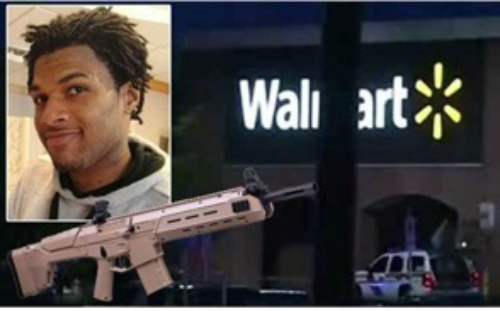Three tragedies shine light on solutions to the officer-involved shooting crisis
By Michael M. Bell and William B. Scott
Rarely does a month pass without U.S. cities erupting in protests and riots, after shootings by police officers. Far too many people—an average of three Americans per day, every day of the year—are dying as a result of contact with police. Civic leaders confronted with riots and angry demonstrations stand before microphones and sagely urge calm, patience and understanding, capped by passionate promises for police reform. Subsequent investigations produce reams of reports, followed by tweaking of policies, procedures and practices. And yet, the rift between police officers and citizens steadily grows.
A sobering new factor has arisen in recent months: retribution. As attacks on police officers in Dallas, Baton Rouge, Pennsylvania and other locales have shown, the current “system” of law enforcement is seriously broken and good people on both sides of the so-called Thin Blue Line are dying needlessly.
But how do we stop this mindless killing? We believe solutions are readily available, and the following incidents offer insights and potential answers:
In Beavercreek, Ohio, on August 9, 2014, 22-year-old John Crawford selected a product from a local Walmart’s shelf, calmly walked toward the store’s checkout area, carrying a toy rifle in one hand and a cell phone in the other. Crawford was talking to his mother via phone, unaware that two other shoppers had called 911 to report a man with a gun was in the store. Adrenaline-pumped officers arrived, confronted Crawford and immediately shouted a series of commands that made no sense to a young man simply engaged in a phone conversation. His ostensibly slow compliance prompted police officers to immediately fire several deadly rounds, killing Crawford.
On November 22, 1994, Ralph Peterson, the pilot of a small aircraft, prepared to fly back to his Iron Mountain, Michigan, home. He acknowledged taxi instructions radioed by the Bridgeton, Missouri, airport ground controller, and for reasons unknown, taxied his twin-engine Cessna onto the wrong runway. A TWA commercial airliner, accelerating to takeoff speed on the same runway, struck the Cessna and sheared its top off, instantly killing Peterson and his passenger.

Both incidents involved systems dependent on human factors, and both ended tragically, thanks to poor communication. Both were thoroughly investigated, but the ultimate outcomes were quite different.
The police-involved fatality yielded no changes in procedures, perpetuating a system that virtually guaranteed the same type of tragedy would happen again. In contrast, the fatal taxiway incident changed aviation forever and contributed to flight becoming the world’s safest mode of travel.
Why such diametrically opposite outcomes? The answer lies in the two professions’ distinctly different EXTERNAL LEARNING SYSTEMS. In aviation, an independent team of National Transportation Safety Board (NTSB) experts diligently gathers evidence after an accident, analyzes data and facts, and issues nonbinding recommendations designed to prevent similar incidents from reoccurring. As a result of the Missouri taxiway accident, the NTSB recommended new protocols be established to improve pilot-controller communications and signage along taxi routes. They even suggested introducing unambiguous terms such as “back taxi” into radio transmissions, to ensure aviators have a better mind-picture of the airfield environment.
In law enforcement, there is no centralized “external learning system” that gathers data and analyzes the facts associated with a deadly incident, then issues preventive safety recommendations.
Consequently, Americans are dying at an ever-increasing rate through encounters with police. In 2016, at least 1,153 people were killed by police officers, approximately three per day. Another 1,209 died in 2015 (killedbypolice.net). According to PoliceOne.com, it is estimated that roughly 25% of officer-involved shootings concern mistake-of-fact scenarios like the Crawford shooting. Indeed, the authors’ sons were killed by frightened, amped-up police officers who made deadly mistakes. Those senseless tragedies drove us to become vocal advocates for systemic improvements in how police-involved deaths are investigated. Hopefully, these will prevent future senseless shootings.
As professional aviators with operational and flight testing experience, we know that aviation’s time-proven protocols could save countless lives, if adopted by police departments. Other high-hazard sectors—such as medicine, aerial firefighting, offshore drilling, and electrical utilities—have been down the same road. Unlike law enforcement, they also learned from deadly accidents and developed protocols to determine the cause of fatal incidents. These yielded policies, processes and procedures designed to prevent future fatalities, as opposed to only finding fault and affixing blame.
For example, the U.S. civil space program suffered a massive tragedy on January 28, 1986. Space shuttle Challenger sat on a Florida launch pad that fateful morning, its external tank and solid rocket boosters sheathed in thick ice. Halfway across the country, a rocket engineer passionately pleaded with his bosses and NASA managers to not launch Challenger. He repeatedly warned that flexible O-rings between sections of the twin solid-fuel boosters could fail, because they were being exposed to unprecedented low temperatures.
The engineer was ignored, managers gave the “Go” order, main engines and boosters ignited, and, 73 seconds after liftoff, Space Shuttle Challenger exploded, killing seven astronauts.

Subsequently, the Rogers Commission issued a hard-hitting report citing NASA and contractor managers’ failure to listen and heed experts’ warnings as key contributors to the disaster. Recommendations from this outside commission ultimately were adopted, significantly improving the shuttle program’s procedures—and greatly enhancing crewmember safety.
Fast forward 31 years and compare the Challenger tragedy’s investigation—and its outcome—with those of most officer-involved shootings. NASA and its contractors did not investigate themselves. They empaneled independent experts and gave them full latitude to scrutinize every element related to the space agency’s processes, procedures and practices. As a result, the Rogers Commission focused on finding causes for the Challenger accident, as opposed to assigning blame and punishing those responsible.
Such an independent, find-and-fix approach is rare in the law enforcement field. Not only do most police agencies investigate their own officers’ actions in deadly situations, the main purpose of those investigations is to determine whether the officers complied with the law and departmental policies, as opposed to identifying correctable causes. Even police agencies—such as the New York City Police Department—that generally do a good job of identifying why their officers used deadly force are unable to readily share those lessons with others in the field. A centralized database to store those lessons, backed by a robust dissemination system, simply do not exist.
Further, the vast majority of police agencies that investigate themselves almost always finds their officers’ use of force justified. Because their report findings often are kept to themselves or shared with a few overseers, no “lessons-learned” are captured or shared—and nothing changes.
Albert Einstein described insanity as “doing the same thing over and over again, and expecting different results.” Until police at all levels take a serious look at how other high-hazard sectors and occupations operate, using a centralized external learning system, they will continue to experience a breakdown of trust and credibility. And Americans—many innocent of any misdeed—will continue to die during encounters with police officers.
The President’s Task Force on 21st Century Policing touched on the need for a centralized external learning system in its final report. That document recommends that “Congress should develop and enact peer review error-management legislation. The task force recommends that Congress enact legislation similar to the Healthcare Quality Improvement Act of 1986 that would support the development of an effective peer review error-management system for law enforcement similar to what exists in medicine.” Such a system would allow law enforcement officers to openly and frankly discuss their own or others’ mistakes.
Back to aviation’s proven methodologies: As the following chart shows, deaths attributed to aircraft accidents have steadily decreased over decades, even though the number of flights has increased to millions per year. Commercial air travel is now the safest mode of transportation in America, primarily because the industry focuses on finding and fixing the cause of accidents, rather than on finding fault.
http://www.cnn.com/interactive/2014/07/travel/aviation-data/
Aviation’s stunning success in drastically reducing the number of accidents and constantly improving safety is directly related to third-party investigations conducted by the National Transportation Safety Board’s independent experts and overseers. Their focus on identifying causes, rather than fault-finding, is summarized on the NTSB website (NTSB.org): “Recommendations usually address a specific issue uncovered during an investigation or study and specify how to correct the situation.”
The NTSB’s “Go Teams” immediately take control of an accident scene, then meticulously search for every single item and factor that might have contributed to the incident. The investigation focuses on what occurred, and a final report issues recommendations for preventing similar accidents in the future. These suggestions go to the Federal Aviation Administration, which can accept or reject them. Typically, 80 percent of NTSB recommendations are put into practice.
Yes, fault may be assigned and lawsuits can still be filed. But fault-finding is secondary to pinpointing the cause of a deadly accident and fixing whatever contributed to it. Prevention of future accidents and continuous improvement are the primary objectives. Investigation findings are captured and logged into a federal Aviation Safety Database, providing information about all accidents and resulting reforms. Lessons-learned are available to everybody in the aviation industry.
Can the NTSB model be applied to policing? We are convinced it can. A Federal Management System for funding and directing statewide peer reviews could and should be established. Independent local or state investigators would handle fact-gathering, while prosecutors would still control decisions made in the context of criminal law. And, as the NTSB does, data could be tightly held during the gathering and analysis phases, then released in the spirit of full transparency via public hearings, available for scrutiny by all interested parties. Embracing these simple measures would build trust and reestablish the legitimacy of today’s law enforcement community.
The lessons of aviation and other time-critical, high-hazard sectors can and should be adapted to the police context. Abandoning a myopic focus on fault-finding and expanding investigations to identify causes that lead to prevention are essential first steps.
Michael M. Bell, Lt. Colonel, USAF retired, was a senior command pilot whose son, Michael, was killed by police on Nov. 9, 2004.
William B. Scott is a former USAF flight test engineer and retired Aviation Week and Space Technology bureau chief. His son, Erik, was killed by police on July 10, 2010.
- This article also was featured in The Constitution on November 20, 2016.



